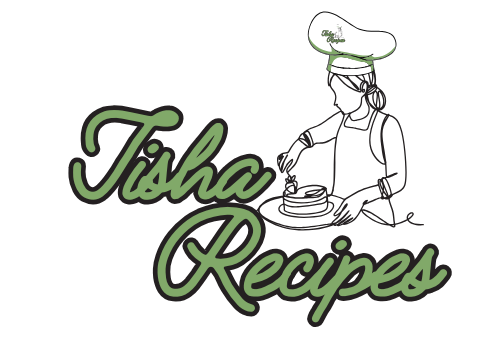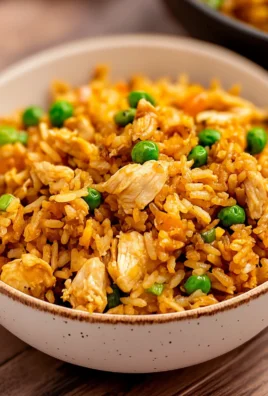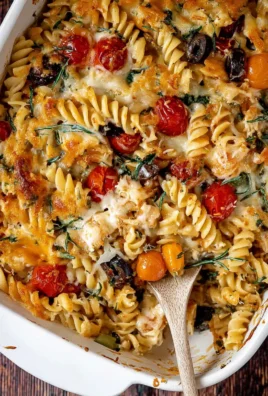
Grilled ribeye steak with herb butter is more than just a meal; it’s an experience that combines culinary skill, premium ingredients, and the joy of cooking over an open flame. The ribeye, renowned for its rich marbling and robust flavor, is a cut that embodies indulgence and satisfaction. Pairing it with herb butter elevates the dish, adding a luxurious layer of aromatic richness that melts into the steak, creating a symphony of flavors.
This dish is a celebration of simplicity done right—where quality ingredients and precise techniques transform a seemingly straightforward recipe into a memorable dining experience. From selecting the perfect cut of ribeye to mastering the art of grilling, this journey explores everything you need to know to achieve steakhouse-quality results at home.
Understanding Ribeye Steak
What is Ribeye Steak?
Ribeye steak is a cut from the rib section of the cow, specifically ribs six through twelve. This area of the cow does minimal work, resulting in a tender and flavorful cut. The ribeye’s defining characteristic is its marbling—streaks of fat interwoven throughout the meat. This fat renders during cooking, infusing the steak with unparalleled juiciness and a rich, beefy flavor.
Bone-In vs. Boneless Ribeye
- Bone-In Ribeye: Often referred to as a “cowboy steak,” the bone-in version retains the rib bone, which adds flavor and helps insulate the meat during cooking, resulting in a juicier steak.
- Boneless Ribeye: Easier to handle and quicker to cook, the boneless option is equally flavorful but lacks the visual appeal and slight flavor enhancement provided by the bone.
Why Ribeye Stands Out
Compared to other cuts, ribeye is celebrated for its balance of tenderness and flavor. Its marbling makes it more forgiving during grilling, as the fat keeps the meat moist and flavorful even if slightly overcooked.
The Appeal of Herb Butter
Herb butter is a classic steak accompaniment that complements the robust flavor of ribeye while adding a touch of elegance. Made by blending softened butter with fresh herbs and seasonings, herb butter melts over the hot steak, creating a luscious sauce that enhances each bite.
Components of Herb Butter
- Butter: Unsalted butter is preferred for better control over seasoning. Its creamy richness forms the base of the compound butter.
- Herbs: Fresh herbs like parsley, thyme, rosemary, and chives add bright, earthy notes.
- Aromatics: Garlic, shallots, or lemon zest can be included for added depth.
- Seasonings: A pinch of salt, freshly ground black pepper, and optional chili flakes bring balance and a touch of heat.
Customization Options
Herb butter can be tailored to your preferences. For a bold twist, consider adding:
- Blue cheese for a tangy, creamy element.
- Smoked paprika or chipotle for a smoky kick.
- Truffle oil or shaved truffle for an indulgent flair.
The Historical Significance of Ribeye
Origins of the Ribeye Cut
The ribeye steak traces its roots to the rib primal, one of the most prized sections of the cow. Historically, ribeye was a cut reserved for special occasions, thanks to its exceptional flavor and tenderness. It became a hallmark of American steakhouse culture, celebrated for its rich marbling and hearty texture.
Grilling Traditions
The practice of grilling meat over an open flame dates back to ancient civilizations. From the barbacoa of indigenous Caribbean tribes to the braais of South Africa, cooking meat over fire has been a universal tradition. Ribeye steak, with its high-fat content and rich flavor, is perfectly suited for grilling, as the intense heat sears the exterior while the fat bastes the meat from within.
Modern Steak Culture
Today, ribeye steak is synonymous with indulgence and quality. It has become a staple at high-end steakhouses and backyard barbecues alike, symbolizing a perfect balance of sophistication and approachability. Herb butter, once a luxury reserved for gourmet restaurants, has found its way into home kitchens, making steak night an elevated yet accessible experience.
The Science Behind Grilling Ribeye Steak
Grilling a ribeye is as much about science as it is about art. Understanding the processes that occur during cooking can help you achieve a perfectly grilled steak every time.
The Maillard Reaction
When the ribeye steak hits the grill, the Maillard reaction begins. This chemical reaction occurs between amino acids and reducing sugars, creating a complex flavor profile and the characteristic golden-brown crust on the steak. A high-heat sear is essential to initiate this reaction.
Temperature Control
Ribeye is best cooked to medium-rare or medium, as these doneness levels allow the fat to melt and render without overcooking the meat. Using a meat thermometer ensures precision:
- Medium-Rare: 130°F–135°F (54°C–57°C)
- Medium: 135°F–145°F (57°C–63°C)
Resting Period
After grilling, the steak should rest for 5–10 minutes. This allows the juices to redistribute throughout the meat, ensuring every bite is tender and juicy. Resting also prevents the herb butter from melting too quickly, allowing it to blend with the steak’s natural juices for a richer flavor.
The Nutritional Profile of Ribeye Steak
While ribeye is known for its indulgent qualities, it also offers several nutritional benefits:
- Protein Powerhouse: A ribeye steak provides approximately 25–30 grams of protein per serving, supporting muscle growth and repair.
- Essential Vitamins: Ribeye is rich in B vitamins, including B12 and niacin, which support energy production and brain function.
- Minerals: It contains essential minerals like iron and zinc, crucial for oxygen transport and immune health.
- Fat Content: Ribeye’s marbling contributes to its flavor but also increases its saturated fat content. Pairing it with heart-healthy sides can create a balanced meal.
Tips for Healthier Preparation
- Trim excess fat before cooking to reduce calorie content.
- Use a leaner cut of ribeye for a lower-fat option.
- Serve with nutrient-dense sides like roasted vegetables or a fresh salad to balance the meal.
Why Grilled Ribeye Steak with Herb Butter is Unparalleled
- Flavor and Texture: The ribeye’s marbling creates a buttery, melt-in-your-mouth texture that is unparalleled among steak cuts. The addition of herb butter enhances this experience with layers of flavor.
- Versatility: Whether served at a casual barbecue or an elegant dinner party, grilled ribeye steak with herb butter fits seamlessly into any setting.
- Ease of Preparation: With the right techniques, grilling a ribeye steak is straightforward and rewarding, even for novice cooks.
Preparation and Cooking Techniques
Creating a perfectly grilled ribeye steak with herb butter requires more than just throwing meat on a grill. Each step, from selecting the right cut to mastering the grill’s heat, plays a pivotal role in achieving a steakhouse-quality result. This section dives into every detail of preparation and execution to ensure your ribeye steak is tender, flavorful, and impeccably cooked.
Selecting the Perfect Ribeye
1.1. Bone-In vs. Boneless
- Bone-In Ribeye: Known for its dramatic presentation, the bone-in version offers slightly enhanced flavor due to the bone marrow’s contribution during cooking. The bone also helps insulate the meat, leading to more even cooking.
- Boneless Ribeye: While lacking the bone’s aesthetic and flavor benefits, the boneless option is easier to handle, cook, and slice, making it a practical choice for many home cooks.
1.2. Marbling and Fat Content
The hallmark of a high-quality ribeye is its marbling. These thin streaks of fat interspersed throughout the meat melt during cooking, infusing the steak with juiciness and rich flavor. Look for even marbling without large, hard chunks of fat.
1.3. Grass-Fed vs. Grain-Fed Beef
- Grass-Fed: Often leaner and with a slightly gamey flavor, grass-fed ribeye is a healthier choice, offering higher levels of omega-3 fatty acids.
- Grain-Fed: Known for its richer marbling and buttery texture, grain-fed ribeye delivers a more indulgent flavor profile.
1.4. USDA Grading
In the United States, beef is graded by the USDA based on marbling and maturity:
- Prime: The highest grade, offering exceptional marbling and tenderness.
- Choice: A step below Prime, still well-marbled and flavorful.
- Select: Leaner, with less marbling, requiring careful cooking to avoid dryness.
Preparing the Ribeye Steak
2.1. Bringing the Steak to Room Temperature
Cold steaks take longer to cook and can result in uneven doneness. Allow the ribeye to sit at room temperature for 30–60 minutes before grilling.
2.2. Seasoning the Steak
- Salt and Pepper: Generously season both sides of the steak with kosher salt and freshly cracked black pepper. Simple seasoning enhances the natural flavor of the beef.
- Dry Brining: For added flavor, season the steak with salt a few hours before cooking and refrigerate uncovered. This process allows the salt to penetrate the meat, improving flavor and texture.
2.3. Optional Marinades and Rubs
- Marinades: While ribeye is flavorful enough on its own, marinades can add a unique twist. Use combinations of olive oil, garlic, soy sauce, and fresh herbs for a mild enhancement. Avoid acidic marinades, which can break down the meat’s texture.
- Dry Rubs: Create a custom blend of spices like smoked paprika, cayenne, garlic powder, and brown sugar for a flavorful crust.
2.4. Preparing the Grill
- Cleaning and Oiling the Grates: Start with a clean grill to prevent sticking. Brush the grates with oil using a high-smoke-point oil like canola or avocado oil.
- Two-Zone Heat Setup: Set up one side of the grill for high, direct heat and the other side for lower, indirect heat. This allows you to sear the steak first, then finish cooking it to the desired doneness.
Crafting the Herb Butter
Herb butter is a simple yet transformative addition to grilled ribeye steak. Its creamy texture and aromatic flavors melt over the hot steak, enhancing every bite.
3.1. Ingredients for Herb Butter
- Butter: Use unsalted butter for better control of seasoning. Let it soften at room temperature for easy mixing.
- Fresh Herbs: Parsley, thyme, rosemary, and chives are classic choices. Use fresh herbs for the best flavor.
- Aromatics: Add minced garlic, lemon zest, or shallots for depth.
- Seasonings: A pinch of salt and freshly ground black pepper bring out the flavors.
3.2. Preparation Steps
- Mixing: In a bowl, combine softened butter with chopped herbs, garlic, and seasonings. Use a fork to mix until well combined.
- Shaping: Transfer the butter mixture onto a piece of parchment paper. Roll it into a log shape, twisting the ends of the parchment to secure.
- Chilling: Refrigerate the herb butter until firm, about 30 minutes. Slice into rounds before serving.
3.3. Variations
- Spicy Herb Butter: Add chili flakes or cayenne for a touch of heat.
- Cheesy Herb Butter: Mix in grated Parmesan or blue cheese for extra indulgence.
- Citrus Herb Butter: Incorporate orange or lime zest for a fresh, tangy twist.
Grilling the Ribeye Steak
4.1. Searing for Crust Formation
- Preheating: Heat the grill to high (450°F–500°F). Ensure the grates are clean and oiled.
- Searing: Place the ribeye steak on the hot side of the grill. Sear for 2–3 minutes per side, creating a golden-brown crust. Avoid moving the steak too much to allow proper crust development.
4.2. Finishing Over Indirect Heat
- Internal Temperature Monitoring: Move the steak to the cooler side of the grill and continue cooking until it reaches the desired doneness:
- Medium-Rare: 130°F–135°F (54°C–57°C)
- Medium: 135°F–145°F (57°C–63°C)
- Using a Thermometer: Insert an instant-read thermometer into the thickest part of the steak for accuracy.
4.3. Resting the Steak
After grilling, transfer the steak to a cutting board and tent it loosely with foil. Let it rest for 5–10 minutes to allow the juices to redistribute.
4.4. Adding the Herb Butter
Just before serving, place a slice of herb butter on top of the steak. The heat from the steak will melt the butter, creating a rich, flavorful sauce.
Troubleshooting Common Grilling Mistakes
5.1. Overcooking the Steak
- Solution: Use a thermometer to monitor internal temperature. Remove the steak slightly before it reaches the target temperature, as it will continue cooking while resting.
5.2. Uneven Doneness
- Solution: Use the two-zone heat method to sear and then finish cooking gently over indirect heat.
5.3. Sticking to the Grill
- Solution: Ensure the grill grates are clean and well-oiled before placing the steak.
5.4. Lack of Flavor
- Solution: Season the steak generously and consider dry brining for enhanced flavor.




Leave a Comment